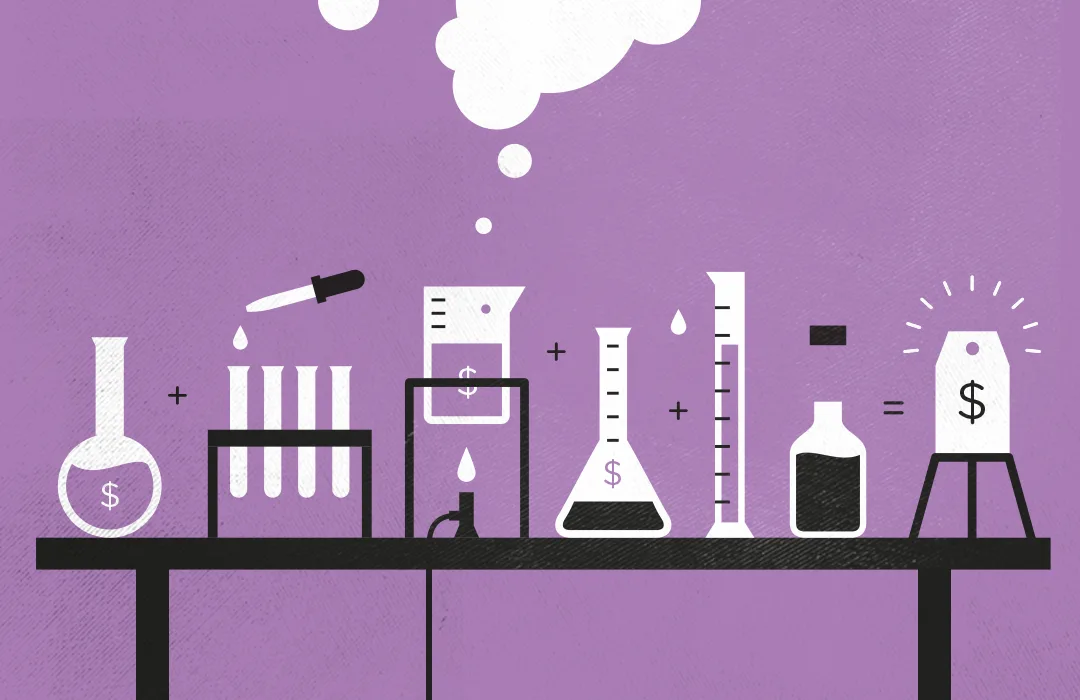A Guide to Pricing Your Products
- 9 May 2014
- ByBig Cartel

Pricing is more than just how much you should charge for your awesome goods - it’s a way of communicating value and quality. It’s the one thing in your product listing that shoppers are guaranteed to look at and consider. So let’s break down the art of pricing and how to use it to your advantage!
The basics
First, you need to know your product's Break Even price. This is essentially what it costs to make your product. Sell for any less and you’ll be losing money - so make sure your price can cover the bare essentials of what it takes.
Once you know your Break Even price, a really helpful formula to get started looks like this:

Wholesale is the price at which you'll sell (in batch quantities) to resellers. The right wholesale price for your product will be your Break Even price (so you don’t lose money) plus the minimum profit you want to make on each product. If you are selling a lot of products, your profit can be smaller, because you will make up for it in quantity.
Retail is how much customers will spend when they purchase your products in a store or directly from you. The retail price is what you pay when you buy things like clothes, electronics, groceries, shoes, and furniture. This is typically Wholesale price x 2, and when you're selling to customers yourself, that nice profit is all yours.
Got it? Good. Now, let's figure out what to plug in!
Materials
Locking down your materials cost sounds like a no-brainer, but you may need to do a few fancy calculations to see how much you use per product. Say you’re a jewelry designer and you need a torch to weld your items - you could divide the cost of a torch fuel tank refill by the amount of items you’ve made by the time your tank runs out. That gives you the material expense per item you’ll want to include in your price. Sound like a hassle? Small things add up fast, and the last thing you want is to be losing money on each order.
Labor
Don't shortchange yourself for labor costs - this is your salary, so be fair! Consider the time it takes you to create your products. Being too conservative here will only make your time and products less valuable. It could even hurt other shops in the same business as you if you are unrealistic about your pricing.
Expenses
Expenses are a thing to consider that can be easy to overlook. A nice and easy way to be sure all of your expenses get accounted for is to think of a typical day working on your shop. Ask yourself “Who? What? Where? How?” questions and you’ll be well on your way to getting your expenses tallied. Who helps you sell your goods? What ways do you advertise for your shop? Where do you create your items? And how do you get your materials to your studio?
There's even more to take into account for expenses. Selling vintage items? Don't forget the gas you’ve used hunting for your one-of-a-kind treasures. Use your computer to manage your online shop? Better include a portion of your internet service fees. Adding tags and packaging to your products? Yep, that goes into expenses, too.

Profit
Last but not least, profit! Maybe you're an artist who uses found materials and works in the great outdoors, rent-free. Even if you don’t pay much for materials or expenses, you should still consider the value of your time and unique point of view. Don't sell yourself short.
Taking pricing to the next level
Your price is the fastest way to tell a story about your work. It might be hard to imagine that a simple number can communicate so much, but you can share the real value of your product after that dollar sign.
You may be surprised that your items could sell better when they are priced a little higher. Think of a price tag as a way of telling your customers that not only is your work valuable, but full of worth.
Dan Christofferson, Anna Brozek, and Lauren Rose contributed to this guide.
9 May 2014
Words by:Big Cartel
Tags
- Share